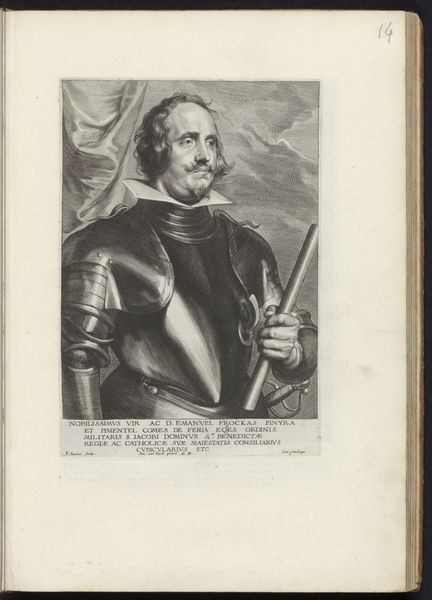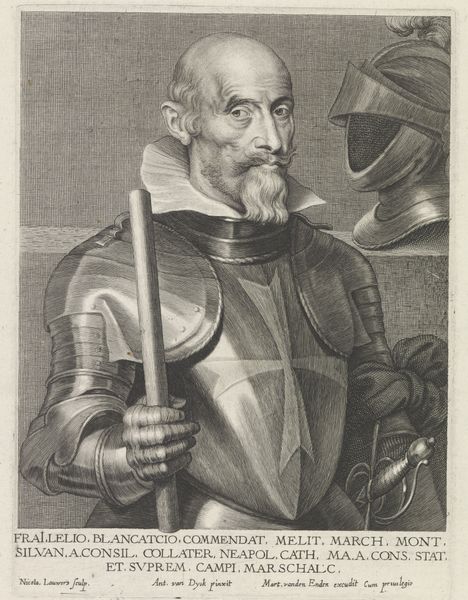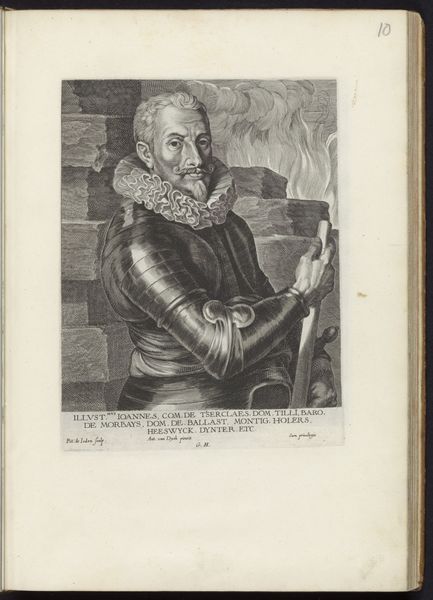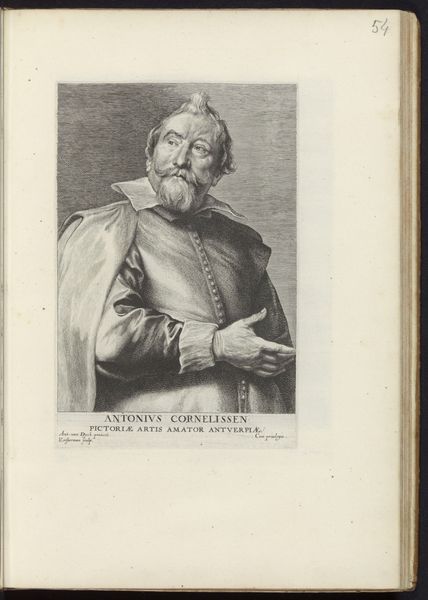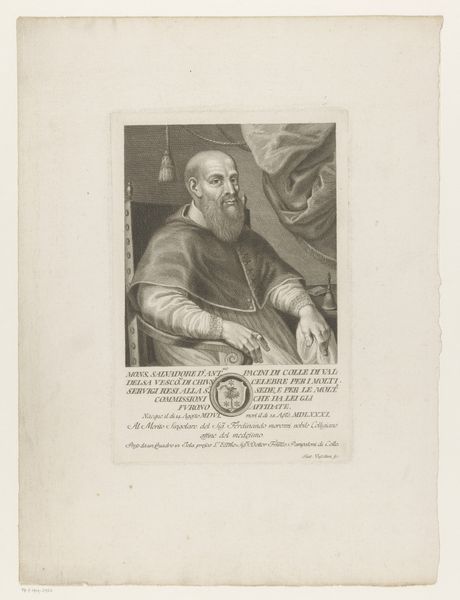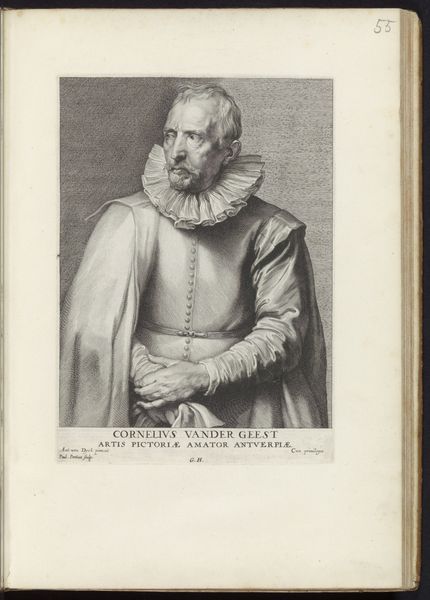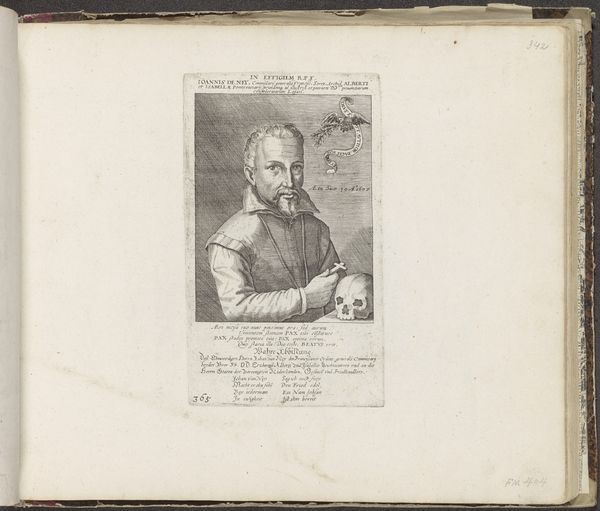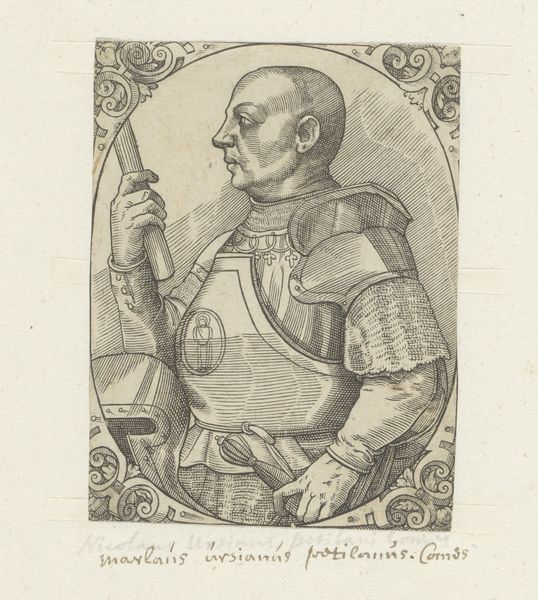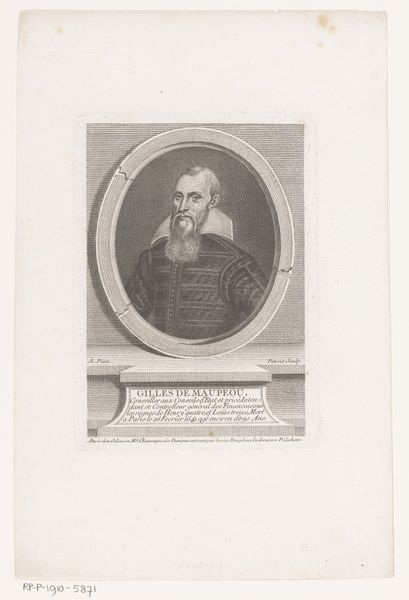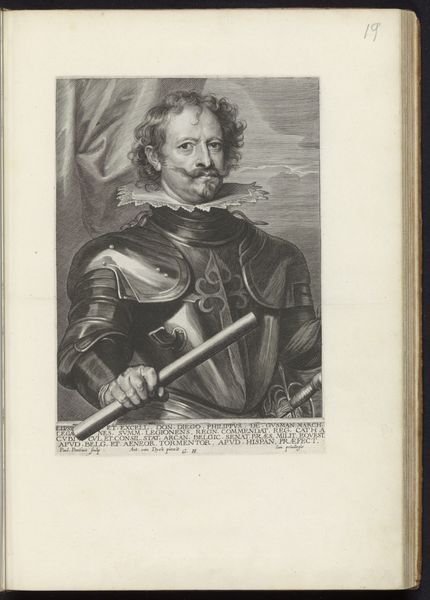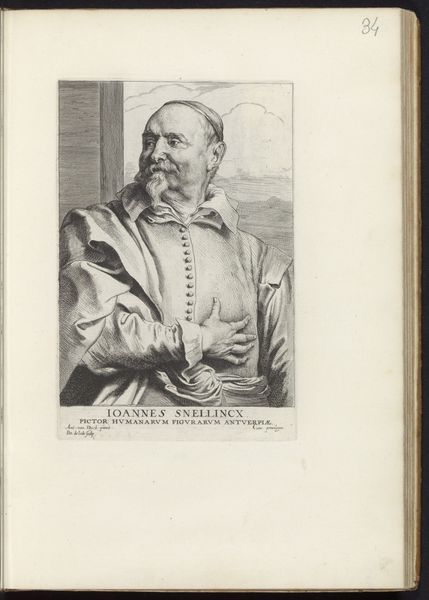
print, engraving
#
portrait
#
baroque
# print
#
old engraving style
#
history-painting
#
engraving
Dimensions: height 228 mm, width 168 mm
Copyright: Rijks Museum: Open Domain
Curator: Immediately, I’m struck by the textures meticulously rendered here. Look at how Paulus Pontius captured the reflective qualities of the metal armor in this print of Lelio Blancaccio. Editor: It certainly evokes a stoic and somewhat severe mood, doesn’t it? The rigid posture, the unflinching gaze... But let's not get lost in surface appearances. It is important to unpack what this portrait communicates about power and societal hierarchies during the Baroque period. Curator: Absolutely, but the materiality shapes that communication. The sharp lines etched into the copper plate, the careful layering of ink – these choices speak to the labor involved in creating and disseminating this image of status. Notice the printmaking technique and how it democratized image production. Editor: That’s a valid point. The engraving’s accessibility allowed for a wider audience to consume and interpret this imagery of authority. But consider Blancaccio himself: what does his portrait, complete with armor and a sword, tell us about the militarization of identity? About nobility? About masculinity at this specific time? Curator: He’s presenting a carefully constructed image of military might and noble standing. Think about the physical act of wearing such elaborate armor. Its creation—the labor, the materials, the skilled craftsmanship involved—would've been immensely valuable and speaks of exclusivity. This isn’t just personal armor; it’s wearable wealth. Editor: Precisely! The weight of that armor also symbolizes the burden of leadership, perhaps even the weight of colonialism and its impact on various cultures. We can examine this artwork, housed here at the Rijksmuseum, not only for what it depicts, but also for the narrative it unintentionally unveils about domination. Curator: Ultimately, this print by Pontius is not simply a representation; it’s a record of labor, status, and societal values embedded in the very material from which it was produced. Editor: Right, a tangible reminder of the systems of power, both historical and those that echo into the present. Looking closer at these pieces encourages a much needed continuous critical conversation.
Comments
No comments
Be the first to comment and join the conversation on the ultimate creative platform.
